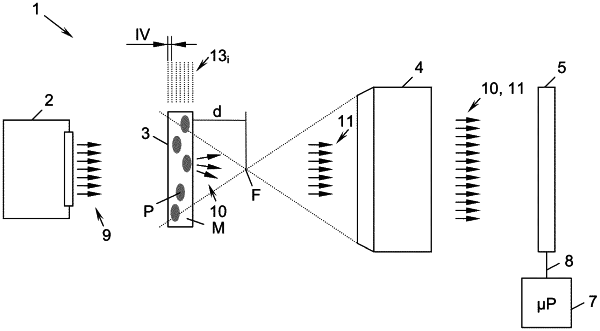| CPC G01N 15/0227 (2013.01) [G02B 27/4205 (2013.01); G02B 27/48 (2013.01); G06T 5/50 (2013.01); G06T 7/136 (2017.01); G06T 2207/10101 (2013.01); G06T 2207/20024 (2013.01)] | 10 Claims |

|
1. A method for determining a three-dimensional particle distribution in a medium, comprising:
providing a sample of the medium containing said particles;
emitting a coherent light beam by means of a light source to irradiate the sample with said light beam, wherein a first part of the light beam is scattered by the particles to create a scattered light beam;
recording, with a camera, an interference image of the scattered light beam and a second part of the light beam that has not been scattered;
computing with a processor, from the interference image, for each one of a plurality of virtual planes lying within the sample, a reconstructed image of the sample at the respective virtual plane, each reconstructed image having a plurality of pixels with an intensity value and a phase value,
generating with said processor, for each reconstructed image, a single presence image having a same layout of pixels as the reconstructed image, wherein a value is assigned to each pixel of the presence images if, according to a first condition, the corresponding pixel of the reconstructed image has an intensity value exceeding a predetermined threshold value and if also, according to a second condition, the corresponding pixel of the reconstructed image has a phase value with a predetermined sign, and wherein no value is assigned if at least one of said first and second conditions is not met, and
identifying the three-dimensional particle distribution from those pixels of the presence images that have assigned values.
|